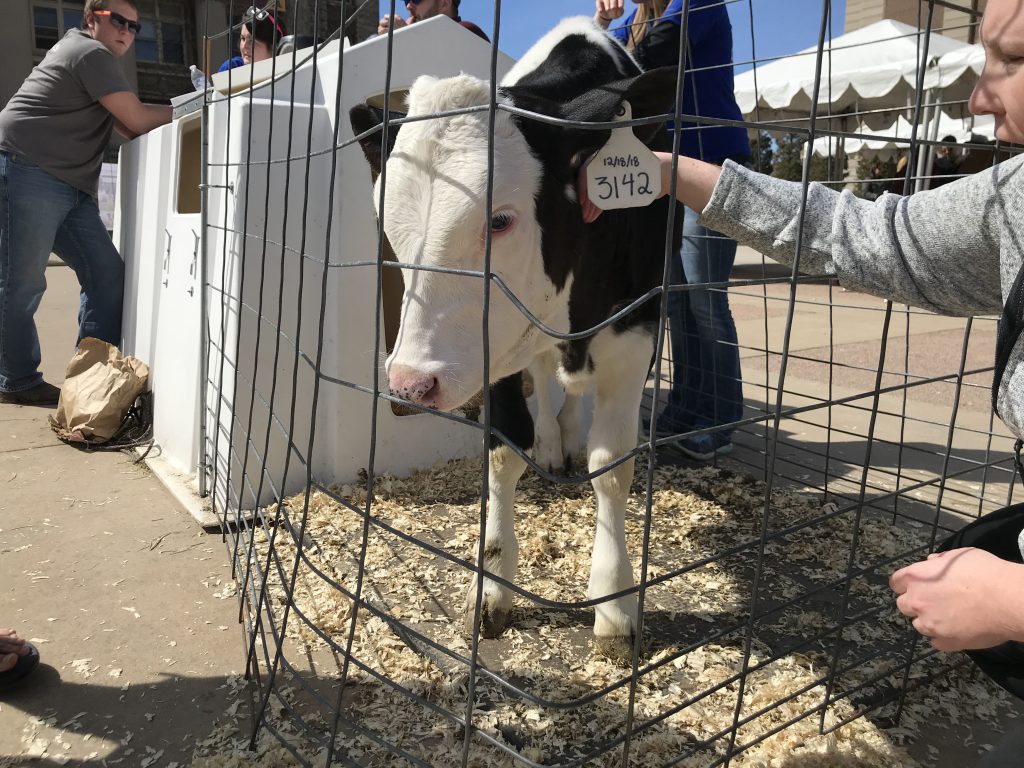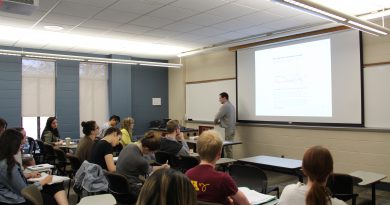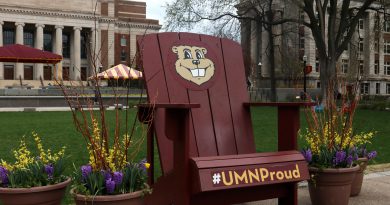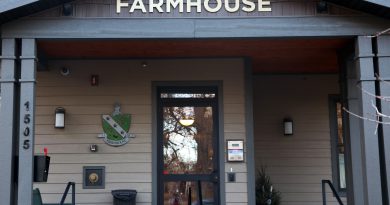Entering the dairy industry is tougher since the Gopher Dairy Club began four decades ago, but its members still see the glass half full
Nearly 40 years ago, when Rolf and Jean Annexstad helped start the Gopher Dairy Club at the University of Minnesota, their dream was simple: support students so they could maybe one day run a dairy farm operation with a couple of hundred cows in rural Minnesota and eventually pass that legacy to their children.
That’s what they did.
Today, their daughter, Emily, is president of that same club, a fact that fills them with pride. But they also know she faces a future radically different from theirs. These days, the goal of building legacies, and even inheriting them, is far from certain. Hard work and stamina are often not enough.
In an environment where margins mean everything, Minnesota’s dairy industry has seen a dramatic decline in the number of dairy farms in the state. Changing technology and increased consolidation has forced many family-owned dairy farms to shut down, pushing large conglomerates with upwards of 20,000 cows to the forefront.
Still, Emily and the 80-plus students in the University of Minnesota’s Dairy Club is as active as ever. Its members choose to brush past the negativity as they network with the dairy-related businesses, work in communications, return to their family dairy farms, enroll in graduate school to further study dairy production or maybe even try to build their own dairy farms.
In other words, it seems, they see the glass half full.
“[The Dairy Club] is just a good deal, and I can tell the students take a lot of pride in it,” said Leslie Hansen, a university professor in the Department of Animal Science who has advised the club since its inception.
“We do point out to them vigorously that they shouldn’t plan for the future just on the way their parents do things,” Hansen added. “We don’t force the agenda…But we’re aware of the changes and that things change.”
From 12 to 80 members
Not long ago, Jean Annexstad was digging through her attic and found a box with the original list of Dairy Club members. There were around 12.
Now expanded nearly seven times, one of the largest student groups on the university’s campus, the organization’s beginnings came simply out of a need for dairy students to meet each other and bond in that shared interest. Today, it does the same, but the group is future-oriented and aims to propel students into the dairy industry.
Unlike many university student groups, the Dairy Club does not receive funding from the university’s Student Services Fees. It raises its own funds every year at the Minnesota State Fair at the Gopher Dairy Bar, which earned more than $150,000 at the 2018 State Fair through the sales of milk, ice cream and milkshakes.
The group uses its funds to tour local dairy farms, attend dairy conferences spanning across the nation, host networking evenings and make connections with Minnesota’s dairy industry.
It’s also a social group. First-year and first-generation university student Ellen Harth said when she first came to the university she was uncomfortable and spent much of her first semester in her dorm room. After finding the Dairy Club, she said she feels like she has a family and a strong grasp of what she would like to do after graduation. She would like to work in agriculture communications and have a 30- to 40-cow dairy farm on the side.

Today’s herd realities
But doing so will be an uphill battle in today’s dairy economy—something Harth understands, which is why she’s preparing to work in agriculture communications in tandem.
In the 1980s, it was a realistic goal to own a dairy farm with approximately 40 cows and to have one’s family run the entire operation, in many cases with very few hired employees. The cows would be tied to a stall, let out to roam a few times per day and milked in the morning and night.
Now, the average herd size is approximately 130 cows in Minnesota. The state, which the USDA ranks 8th in the country in milk production, producing more than 9.5 billion pounds of milk annually, has approximately 3,000 dairy farms, compared to approximately 20,000 dairy farms that existed in the 1980s, said Jim Linn, a retired university dairy extension professor of around 35 years.
Back in the ‘80s and ‘90s, Linn said dairy prices were not enough to sustain the costs, so many went out of business and sold cows to other farms, which contributed to the industry’s consolidation.
One issue is milk pricing, which has changed since the 1970s, when the federal government set a minimum price in an effort to support failing dairy farms. Those support prices are no longer in effect, and farmers are still adjusting to a free market, said Lucas Sjostrom, the executive director of the Minnesota Milk Producers Association.
“It’s bad for everybody right now, even the largest dairies,” he said. “We’re in a very, very risky situation.”
No room for error
Milk itself is also priced differently from 40 years ago.
Back in the ‘80s, Linn said milk was thought of as a raw ingredient. Now, milk is priced for its different uses. As a result, milk is currently priced on its fat content and how much protein is in the milk, among other intrinsic qualities.
“Milk isn’t what we thought back in the ‘80s,” Linn said. “Generally, when we thought of milk we thought of milk production and producing a glass of milk.”

As a result of all these factors, very few aspects of dairy farming are left to chance.
Although there are many reasons why the industry has changed over the last 40 years, Linn said he believes the main reason is the younger generation saw the struggles of their family members and wanted a different lifestyle.
“I think mostly it was a lot of hard work and mostly, children saw how much effort and work the parents worked on the farm,” Linn said. “That was not the lifestyle that appeared to them at that time.”
Technology, though, has freed up life on the farm, and college students today recognize the realities might be opening up for them. Forty years ago, Linn said, many farmers would hardly leave their farms; today, an increase in automation and farm sizes have allowed for less strenuous work and can allow for time off.
A family tradition
A few years ago, Rolf Annexstad added additional acreage for crops to his dairy farm, which he inherited from his parents, and now he is working to become more efficient. His two sons, who are first-year university students, have expressed interest in taking over the family farm once out of school, and Rolf Annexstad said he wants to keep the farm updated for them.
Four years ago, the Annexstads started genomic testing on their cattle to determine how well a calf will produce milk and how easily it can breed.
“I think it used to be that if you worked hard that was about all you needed to do to be successful,” Rolf Annexstad said. “Now, you have to work hard and work smart and make business decisions, too.”
But his daughter, Dairy Club President Emily Annexstad, says she is looking beyond the dairy farm to a job in agricultural communications—something that she hopes will bridge the gap between city life and her farm roots.
Besides, she said, the realities of the industry do not dominate discussions in Dairy Club. The club is like a family and a place where she can get together with her friends to talk about the future, yet still cling to dairy farming roots she grew up on.
The members of the Dairy Club often have many classes together, or even live in the same fraternity or sorority house on the university’s St. Paul campus. This means they spend much of the school year together, so the club gives many a sense of belonging.
“Going to the university is part of our family tradition,” Emily Annexstad said. “Since my parents helped start the club and now I am president of that club, I feel like my life has sort of come full-circle.”


